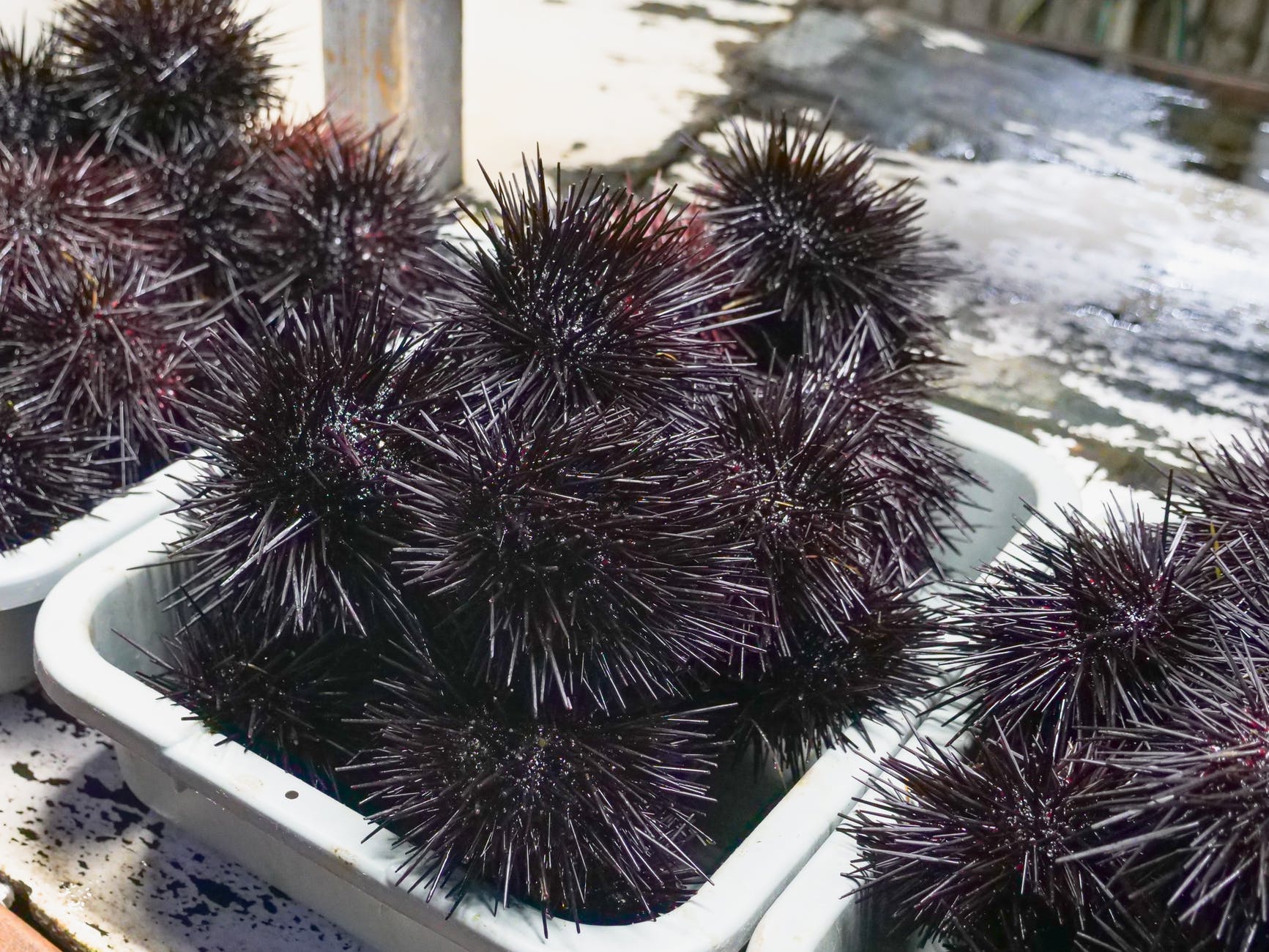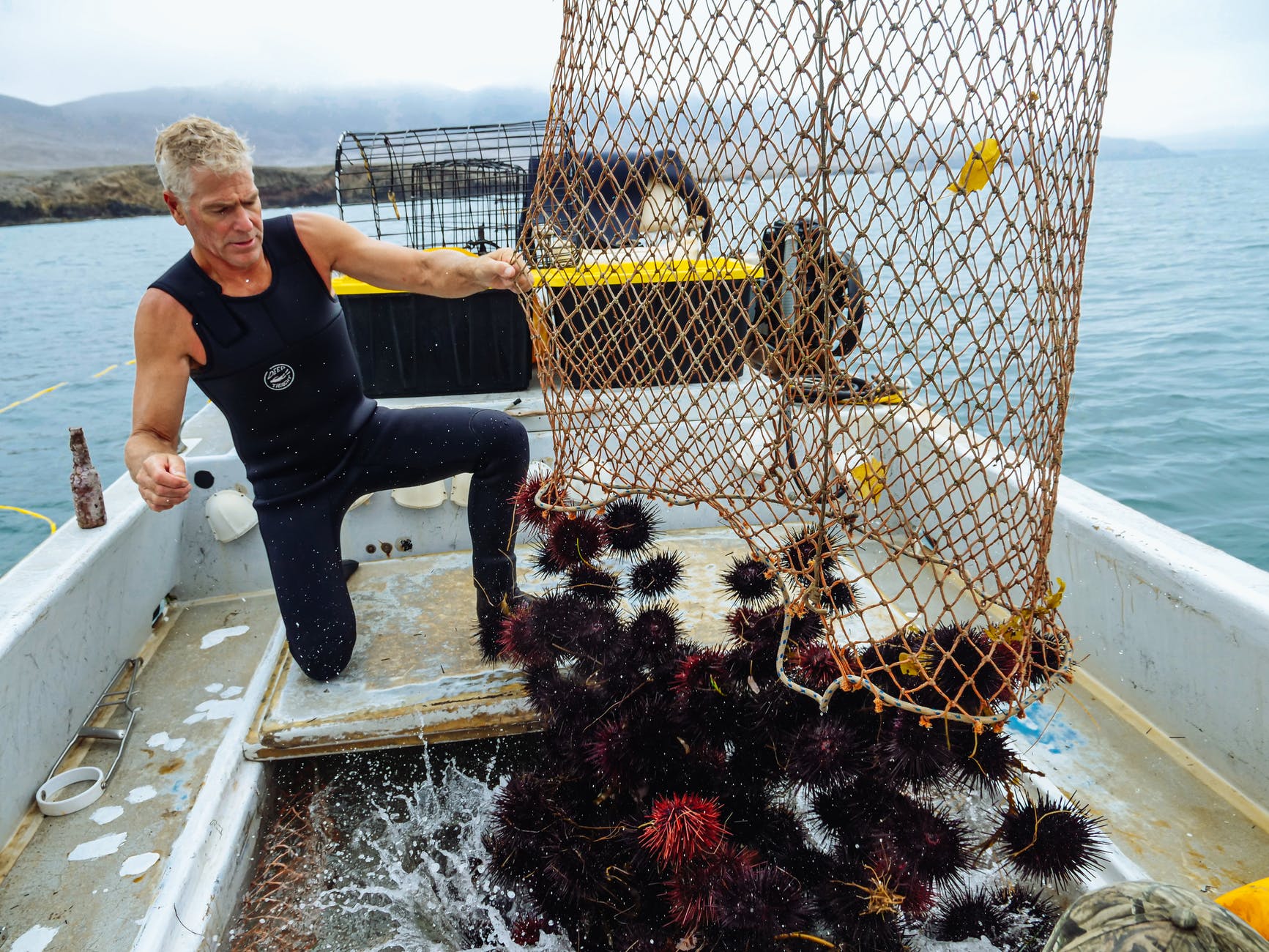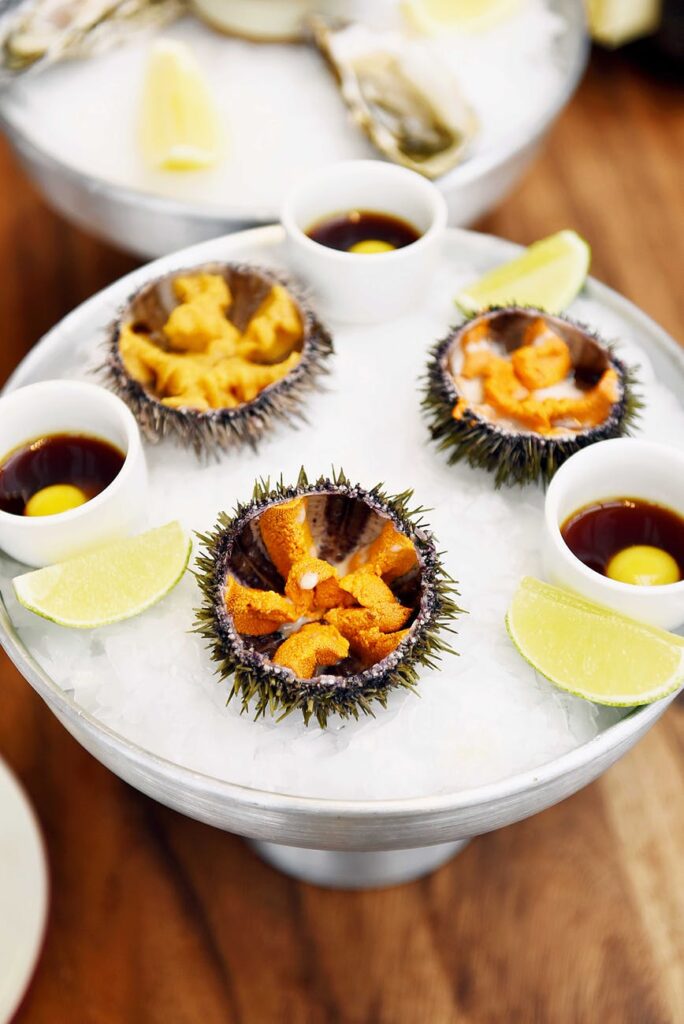Why sea urchins so expensive? just one 200g tray of urchin gonads can cost up to $100. In this article, you’ll understand why sea urchins so expensive.
About 20,000 pounds of sea urchins are delivered to a factory in Santa Barbara each week. But it’s not until you crack open the spiky shells that you see what makes sea urchins valuable, the gonads.
Just one 200g tray of urchin gonads can cost $100. And, some in Japan can sell for over five-time that. Sea urchins are one of the few kinds of seafood still hand-harvested by divers today. In recent years, masses of them have taken over the seabeds of California.
Also Read: Most expensive liquids in the world
So, why are there so many urchins? And how, despite this seemingly huge supply, why sea urchins so expensive?

Sea urchins, or uni, is a prized delicacy in several parts of the world. Today, the yellow-orange gonads are often served in sushi and even right out of the shell.
Hundreds of urchins species exist, but only a select few are coveted food, including the red sea urchin. In Santa Barbara, they are known as “ California gold”. These gonads are priced because they are large, buttery, and sweet from the kelp they eat.
To find gonads like this, divers need to collect individual sea urchins by hand. Michael Robertson is a diver who has been diving for sea urchins for 15 years.
He starts his days early, sailing out before the sun rises. It takes him and his crew about two and half hours to reach a good diving spot. Michael looks for abundant kelp forests to help him decide where to dive. More kelp typically means better-quality urchins.
In 2010, a diver can harvest roughly around 2,000 pounds a day of good quality sea urchins. Now the divers are typically coming in with about 300 – 500 pounds a day. It’s equal to a quarter of the among from before.
But surprisingly, parts of California’s seabeds are full of sea urchins. If they want to, they could still bring in 2,000 pounds a day. There’s a lot of sea urchins out there. But there’s a lack of kelp. So, even if you bring in 2,000 pounds, if they are not marketable, then we don’t harvest them.
The lack of kelp impacts the value of red sea urchins. It also strain’s the ocean’s ecosystem and the species that rely on kelp forests for habitat. Along with worming water and pollution in recent decades, a certain sea urchin is to blame.
Sea urchins can survice for years without eating, even without gonads. And after the decline of sea stars, one of its predators, in 2013, the purple sea urchin population exploded. Consuming more than 95% of California’s kelp forests as it grew.
Purple urchins are smaller and produce fewer gonads, so there’s little commercial demand for them. And as purple urchins multiply and eat more kelp, red urchins with good gonads become harder for divers to find.
Finding the right spot to dive is just the first challenge. Getting your hands on these spiky creatures is the main one.

Some people wonder if sea urchin diving is a dangerous occupation. It can be dangerous as you allow it. If you don’t keep really tight tabs on your gear and the mechanics of your boat, it could easily kill you.
To make the job easier, these divers need specific tools.they need some custom made tools which made according to the divers preferences.
Once they’re suited up, divers head to the bottom and begin collecting urchins one by one. Even with the proper gear, a good dive is never a guarantee. Typically, there are only about five gonads inside each urchin. And without enough kelp for the urchings to feed on, the gonads start to shrivel up.
In some cases, an urchin will be totally empty inside. Sometimes divers do crack urchins on the bottom so that they can see what they’re picking. If there are enough product inside, and if they like the color inside, they’ll pick them.
To make things more challenging, divers can only harvest urchins at least 3 ¼ inches in size. And they just go out and pick empty urchins. There are a lot of empty urchins than there is beautiful packed urchins that they’d want to sell. Depending on what they’re eating, depends on the grade of the urchin.
After a 12 hour day to the islands and back, divers returns with 750 to 900 pounds of urchins. The shelf life of fresh urchins is short, so they need to be delivered to processors that same night. By 4 a.m.
The other team who crack and process the urchins is already cracking and cleaning each one by hand. The gonads are extreamly fragile, and they only stay fresh for about a week. Workers crack each urchin down the midde to avoid breaking any of the gonads inside.
Then it’s time for one of the most crucial parts of this process, cleaning the gonands. This stage requires sharp attention to detail. If workers don’t totally remove the intestines inside the urchin, the gonads degrade faster. And if any of the gonads rip during this process, they immediately drop in value.
If the gonad breaks, then it drops a grade or two. And when it goes from A++ grade and we have to drop it down to B grade. The value is maybe about a quarter of what it could have been.
Workers then sort the gonads by color, making sure each tray has a uniform shade of yellow or orange. After they’ve packed each wooden tray, they use tweezers to inspect each gonad again and gently remove any remaining kelp, shells, or spines.
The most valuable gonads make up the A++ grade. They can sell a 200g premium tray around $100. Bright yellow or orange uni come only from the sweeter male urchins. They are primarily send to restaurants, but it doesn’t come by the premium quality of gonads often. Typically it can be only found one premium gonad out of every 100 urchins.
Sea- urchin gonads weren’t always valuable food in the US, particularly in the 70s. The government used to ask the divers, the local divers, to smash them, kill them at the time. Until a Japanese person came along and said, “No, this is actually a delicacy in Japan.”
After many trials and errors, they found out that Santa Barbara sea urchin is actually really, really good, like one of the best in the world. Santa Barbara urchin was traditionally shipped to Japan, until economic collapse stalled things in the mid-90s.
Fortunately, for US producers, a sushi boom took off the US around the same time. Those who able to make the transition from the Japanese market into the US domestic market survived at the time.
Uni is one of the few seafood out there that they really haven’t perfected farming yet. Until somebody figures that out, uni is probably going to be a limited highly sought-after item. This ultimately raises the price of rare premium gonads.
This year they’re actually seeing a good-quality, high-quality uni that they haven’t seen in about a decade. They are seeing a lot more colder waters. They are starting to see kelp grow back where it hasn’t grown back in the last 10 years.
After a difficult decade, things might be looking up for red sea urchins and the kelp they depend on. So that’s why sea urchins so expensive.
